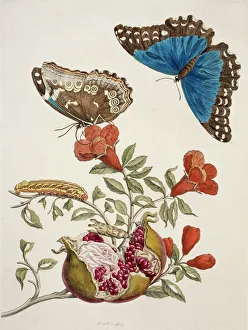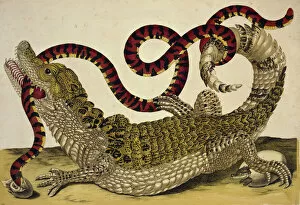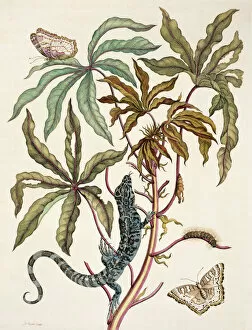1668 1773 Collection
In the years 1668 to 1773, a fascinating exploration into the natural world took place in Surinam
All Professionally Made to Order for Quick Shipping
In the years 1668 to 1773, a fascinating exploration into the natural world took place in Surinam. This period witnessed an incredible documentation of the diverse and captivating insect species that inhabit this South American country. One of the remarkable findings during this time was the study of "Insects of Surinam. " Researchers delved deep into the intricate lives and behaviors of these tiny creatures, uncovering their unique adaptations and ecological roles within Surinam's rich biodiversity. But it wasn't just insects that captured attention; other intriguing animals were also observed. The Caiman crocodilus crocodilus, a formidable predator inhabiting Surinam's waterways, fascinated scientists with its powerful jaws and stealthy hunting techniques. Another creature that piqued curiosity was Anilius scytale, a rare snake species known for its vibrant colors and slender body. However, it was undoubtedly the Insects of Surinam that stole the show throughout this era. From delicate butterflies fluttering through lush rainforests to industrious ants building intricate colonies underground, each insect played a vital role in maintaining Surinam's delicate ecosystem. The researchers' meticulous observations allowed them to unravel mysteries surrounding these insects' life cycles, feeding habits, and interactions with their environment. They marveled at beetles adorned with iridescent hues as they crawled across leaves while marveling at spiders spinning intricate webs to ensnare unsuspecting prey. This comprehensive exploration not only expanded our knowledge about these often overlooked creatures but also highlighted their importance in maintaining ecological balance. It served as a reminder that even seemingly insignificant beings can have profound impacts on our planet's health. As we reflect on those years between 1668 and 1773 when countless hours were dedicated to studying "Insects of Surinam, " let us appreciate how such endeavors contribute to our understanding of nature's wonders.






